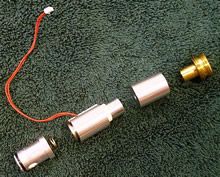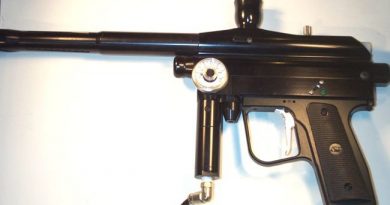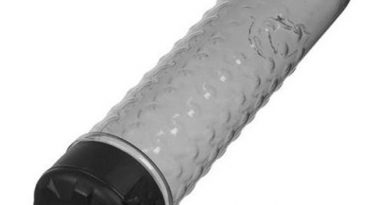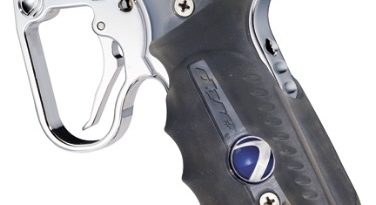MQ Valve Review
By Andrew C. Syren
The Autococker has built for itself a name above all names in the paintball industry. With companies like ANS, Free Flow and Palmers in the after market court, it is no difficulty understanding why this marker has been a flagship for bringing paintball as far as it has. With such a great legacy you would expect that the cocker would to this day have as popular reputation as it did just a few short years ago.
In reality, it does not have such popularity. In fact, the population of cocker owners is getting smaller and smaller by the day. I suspect this is due to the idea that these markers require a PHD in mechanical engineering to keep them running. They are in fact, much easier and much more fun than what most negative users had tricked us into believing.

Above: Here is a picture of all the components removed for the installation of the MQ-Valve. With the decreased weight and removal of the sear solenoid, the marker feels much lighter in the rear and makes for an impressive feel.
With great advancements into the cocker world we see companies like Racegun, Planet Eclipse and the like with their electronic trigger frames for the cocker. But with even the greatest of these comes the disillusionment that the cocker is still a sear tripping, stack tube paint slinger and is dwarfed in competition due to it’s mechanical complexities.
I say mechanical because here we see that in most cases, a sear tripper is limited to a lesser cycles per second (CPS) rating due to the mechanics of the gun. Too much moving mass and too much weight, these factors all weigh in and thwart the cockers climb to stardom in today’s competitive world of lightweight and blazingly fast markers. Is there a solution to this handicap? Is there a company willing to exert what effort it takes to bring back the cocker? The answer is yes, and the answer lies with PBX Paintball.

Above: As you can see, in comparison the size of the MQ-Valve is relatively the same in mass to the valve and hammer your replacing. However, the MQ-Valve is made of aluminum and weighs considerably less.
For the last year or so PBX Paintball has been selling what I would personally call the savior to a dying breed. With all the new markers coming into fruition, the cocker was being left behind and labeled a sear tripper in the most negative way. With the solution brought to us by PBX, these terms of negativity are abolished.
The solution was the invention of the Mq-Valve. Kerry Johnson (2005) gives us a little history on the Mq-Valve by saying: “Mq stands for Mike Quinn, the guy who came up with the idea. Mike has a masters degree in mechanical engineering from Stevens Institute of Technology and works full time for BD (Becton, Dickinson and Company)”. The Mq-Valve is a simple drop in upgrade to the cocker that turns the sear tripping hardware into a true electro-pneumatic gun with nearly zero mechanical drawbacks.
The hammer, sear, sear solenoid, valve and springs are all removed from the cocker and replaced by a smaller, lighter valve, solenoid with sleeve, and spacer. The weight difference was astronomical and could easily be felt after installation was complete. It was as if there was no weight to the back of the gun after the Mq-Valve was installed.
The effects of the valve installation were not only felt in the weight of the gun but in the performance. The first shipment of valves went out and required an input pressure of about 300psi or less to run. It was recommended that the users run a high input pressure and a low dwell but setting the dwell at 4ms and the input pressure at 280-290 worked well for my setup. The one aspect of performance that I noticed was how fast the marker shot. There was no lag time between shots, as the marker did not have to wait for the valve to energize as it might have before.
The MQ requires so little time for recharge that as Kerry Johnson says, “It almost feels like it shoots before you pull the trigger”. The consistency was a bit erratic at first but after a few hundred shots the valve was hitting the chrono consistently. Remember, that a great paint to barrel match is key when testing any gun at the chronograph and it is no exception here.
The test gun I used was no other than the ANS X5e used in review here at the Times. With the lightweight body and tried and tested pneumatics of this cocker the Mq-Valve was the best upgrade available. I have been around to witness some of the greatest cocker upgrades but with the exception of the E-Blade, the Mq-Valve is the best upgrade money can buy. At this point, the price of the Mq-Valve sits around 119 dollars and relatively so.
Figure what it would cost to replace the springs with lighter ones, the valve with a higher flowing valve, the hammer and the IVG and Valve nut and your not too far off when it comes to price. However, with all the upgrades in the world your still looking at a larger volume of moving mass that can only impede the cockers’ performance and, it’s still a sear tripper. With the Mq-Valve you drop the weight, the moving mass and you gain in the speed department. What more could you want?
If you want to see what a cocker was built to do and what the possibility of these markers truly is, then you need the Mq-Valve. A simple drop in upgrade that takes little knowledge of e-grip settings to have running flawlessly. The Mq-Valve can be bought for all types of cockers and if there is somebody out there with a custom cocker that nobody has, PBX will see to it that they get something out for you. After my conversations with them I am convinced that they are some of the coolest guys on the planet and will help you get your cocker running faster. Got a cocker? Get it running faster. Get it running with the MQ-Valve and see what your missing.
References to Kerry Johnson were taken from http://www.kajohnson.com/mqv.html.
Please visit PBX at www.pbxlab.com
Cocker used for test was the ANS X5E.




